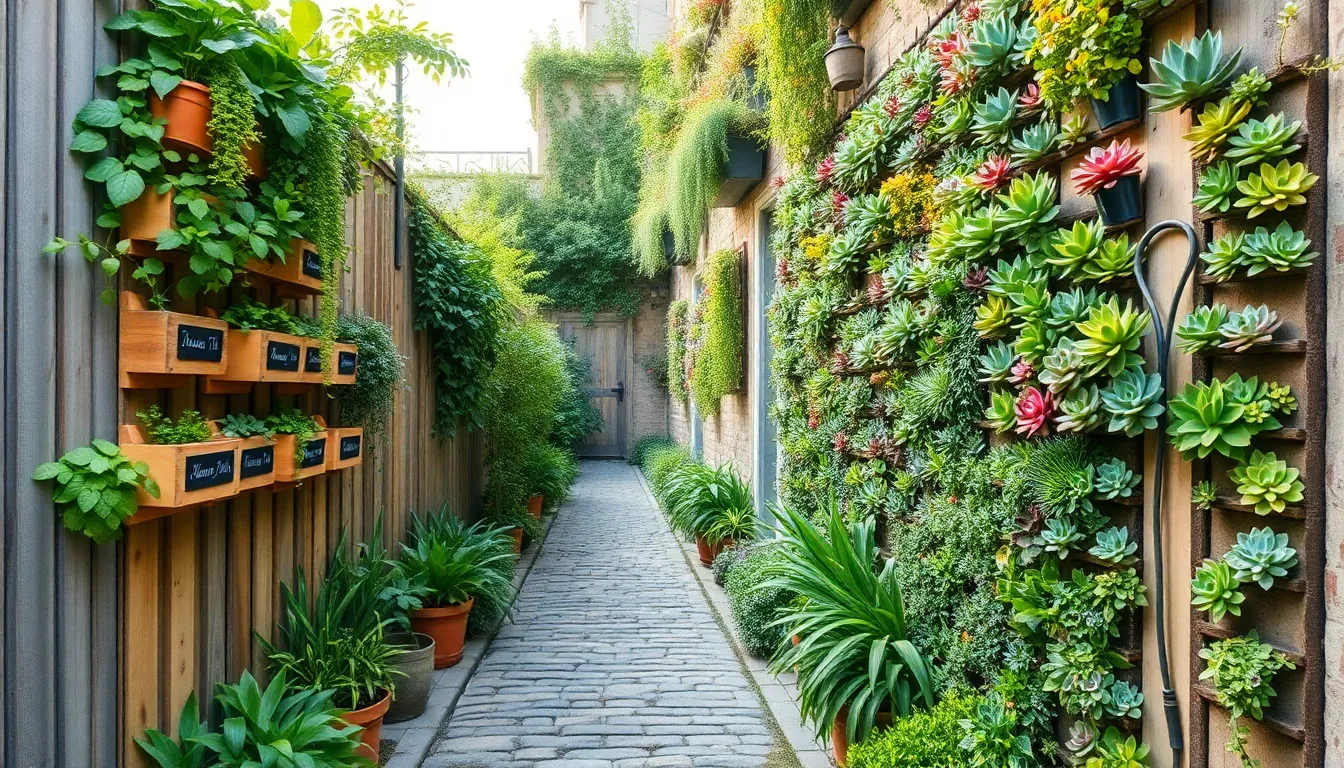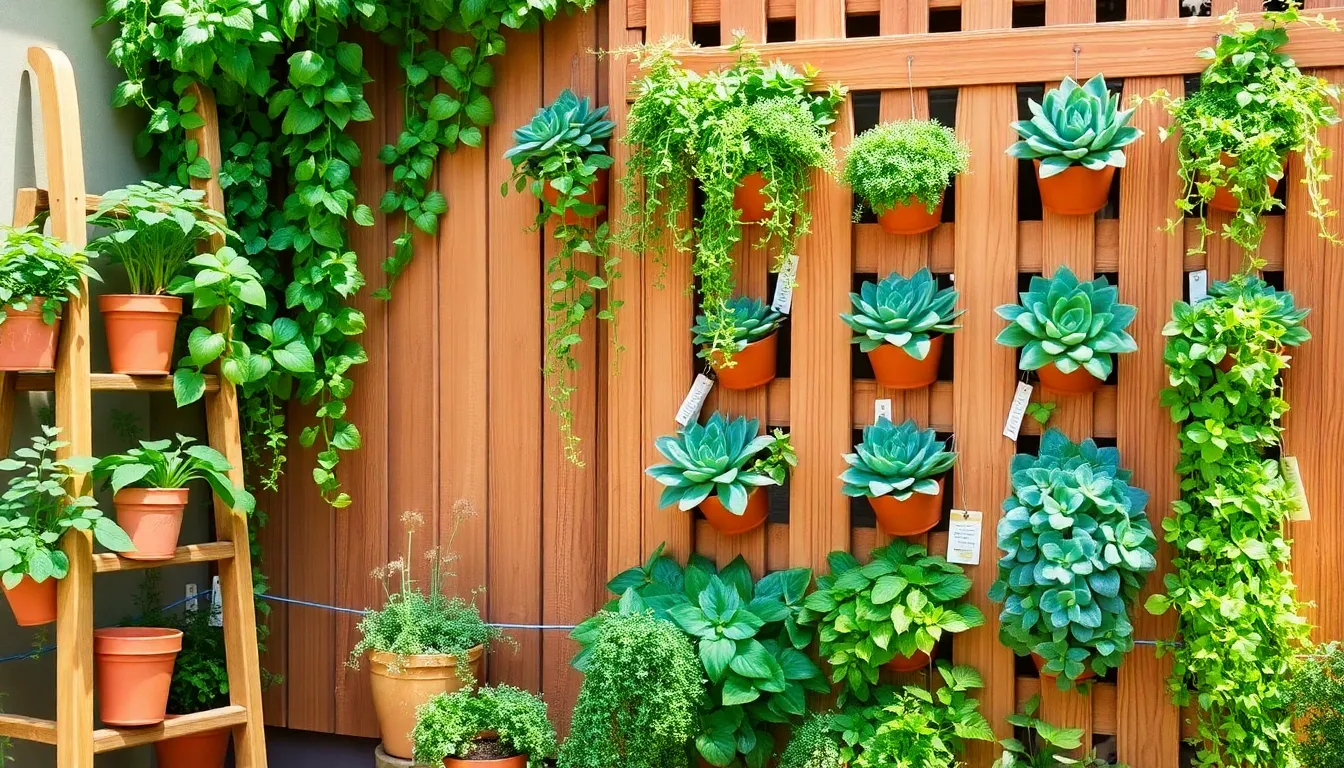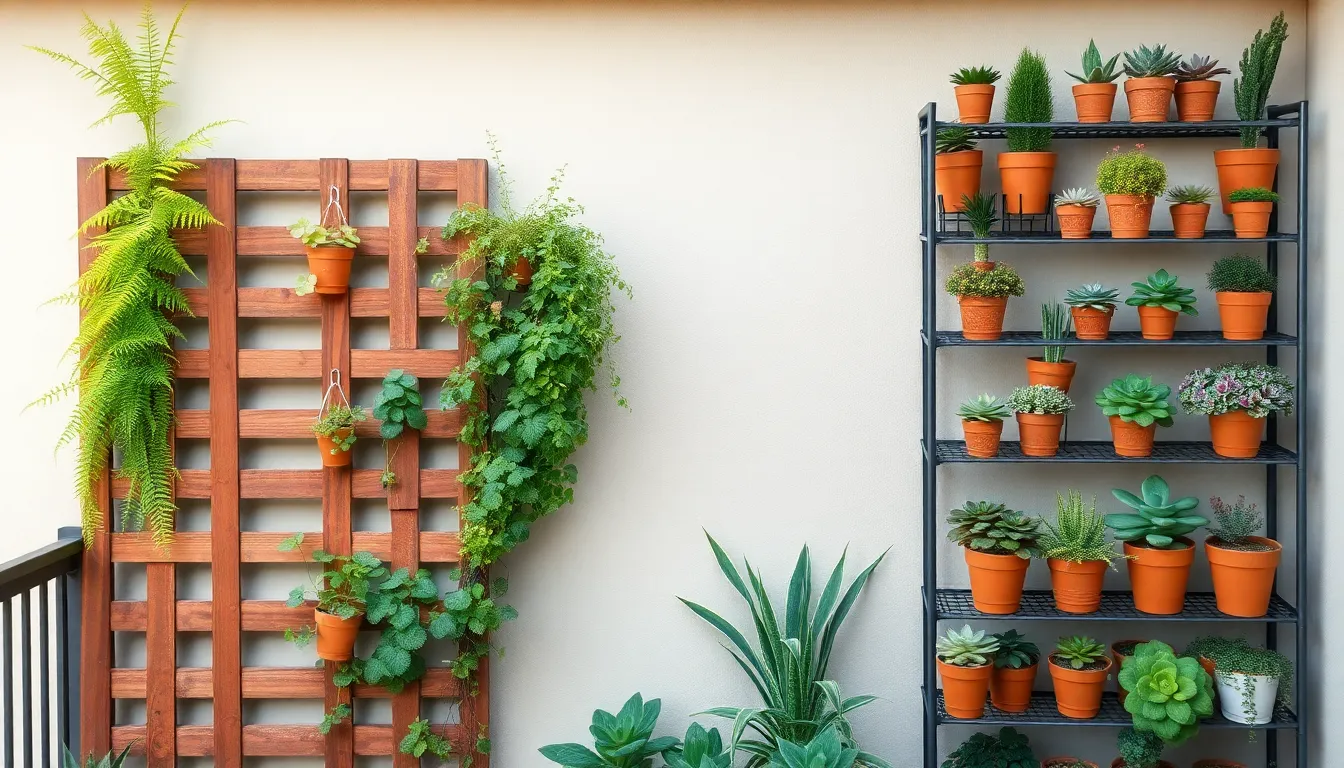In the world of gardening, where creativity knows no bounds, vertical garden pathways are emerging as a delightful way to transform your outdoor spaces. These innovative designs not only maximize your available area but also infuse your garden with layers of lush greenery. Whether you’re just starting out or you’ve been tending to your plants for years, vertical garden pathways offer a fresh perspective that’s both functional and beautiful. By bringing plants to eye level, they invite you to explore your garden from a new angle, making every stroll a journey through verdant wonders.
Vertical garden pathways are more than just a trend—they’re a testament to the adaptability and ingenuity of modern gardening. As our living spaces become more compact, these designs provide an elegant solution for integrating nature into even the smallest of areas. In this article, you’ll discover 13 inspiring vertical garden pathway designs that will spark your imagination and encourage your green thumb to reach new heights. From cascading vines to fragrant herbs, these pathways promise to be as practical as they are enchanting, offering something for gardeners of all levels.
You’ll learn how to select the right plants, materials, and structures to create a vertical garden pathway that complements your existing landscape and personal style. We’ll explore various techniques and tips that ensure your pathway thrives season after season, becoming a cherished part of your garden. No matter your skill level, these designs will empower you to craft a garden that not only beautifies your home but also nurtures your soul. Let’s embark on this green adventure together, and watch as your garden flourishes both upwards and along the path you tread.
Introduction to Vertical Garden Pathways
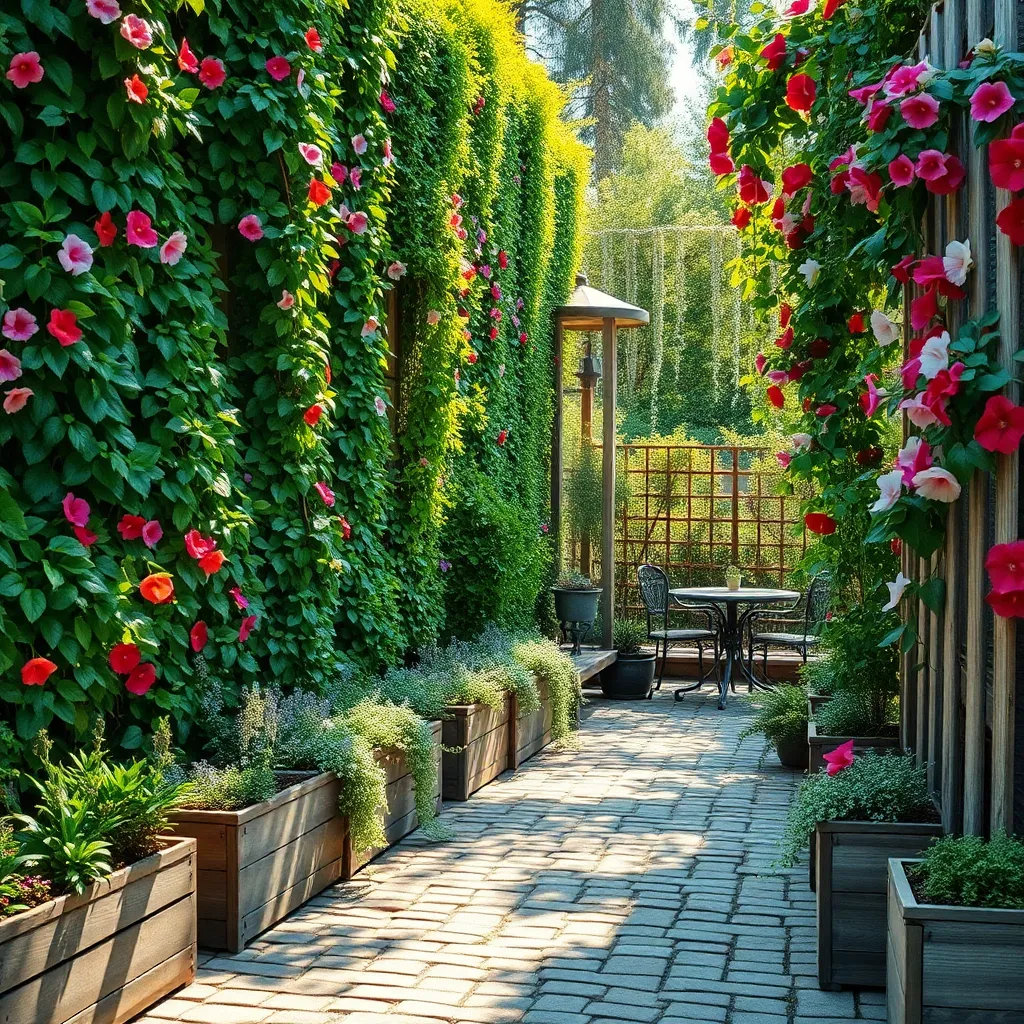
Vertical garden pathways offer a unique way to enhance both the aesthetics and functionality of your garden space. By utilizing vertical structures, you can optimize limited areas while creating an eye-catching feature that leads through your garden.
To start, choose vertical structures such as trellises or arches that suit the scale of your garden. Materials like wood or metal can provide the necessary support and durability, depending on your climate and the plants you select.
When selecting plants for your vertical garden pathway, consider their growth habits and sunlight needs. Climbing plants like clematis or ivy are ideal for vertical spaces, as they can easily wrap around supports and thrive in various light conditions.
For beginners, ensure the soil is well-draining and rich in organic matter; this is crucial for healthy plant growth. Watering should be consistent, with frequency adjusted based on seasonal changes and plant types, to maintain optimal moisture levels.
Experienced gardeners might experiment with layering different plant species to add depth and visual interest. Incorporate seasonal flowering plants alongside evergreen varieties to ensure your pathway remains vibrant throughout the year.
Benefits of Vertical Garden Pathways
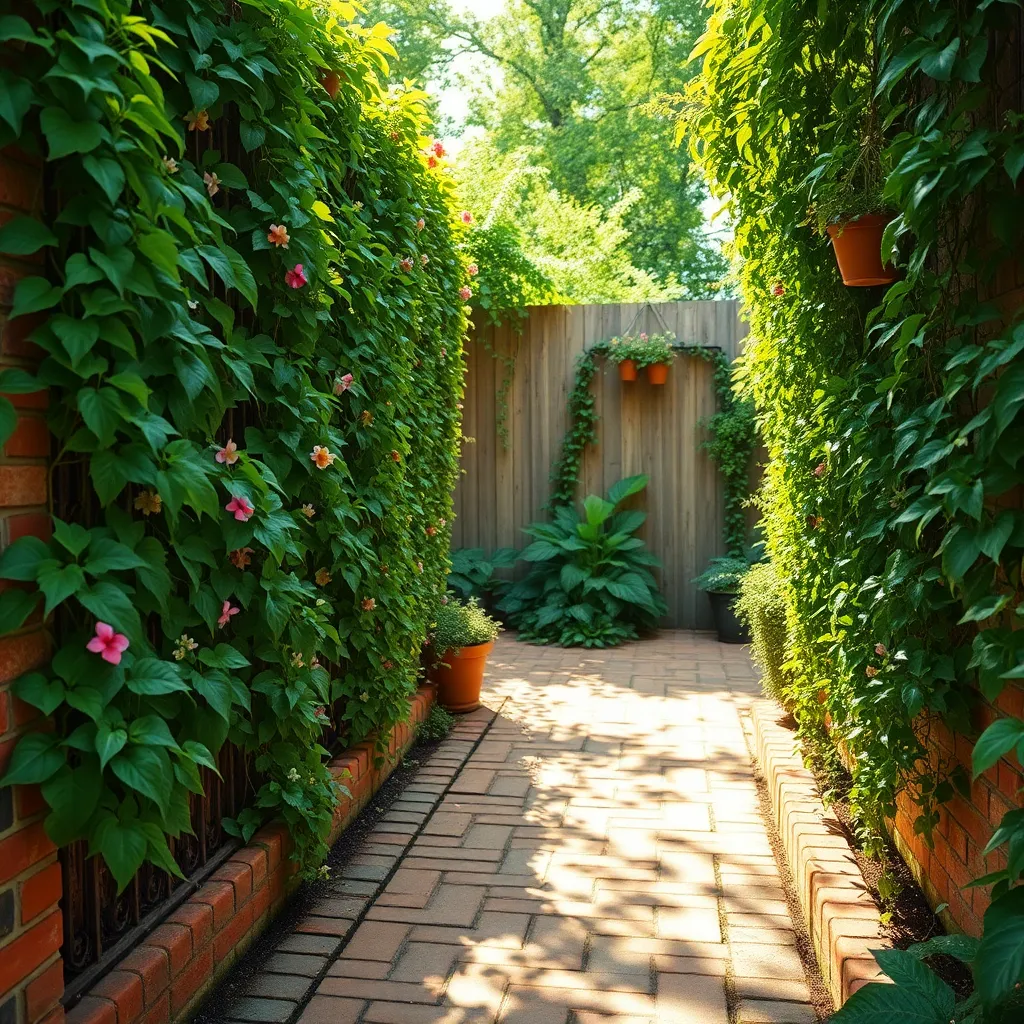
Vertical garden pathways offer a unique blend of aesthetics and functionality in any garden space. They maximize the use of limited areas by allowing you to grow plants vertically, which can be especially beneficial in urban settings with limited ground space.
To create a thriving vertical garden pathway, you’ll need to select plants that thrive in the vertical environment. Consider using plants with shallow root systems such as herbs like thyme and oregano, or ornamental plants like succulents, which require less soil depth.
Proper watering techniques are crucial for vertical gardens, as gravity can cause water to drain quickly. Implementing a drip irrigation system can help ensure that each plant receives adequate moisture without wastage, making it an efficient choice for maintaining plant health.
Soil selection is also an integral part of nurturing a successful vertical garden. Opt for a lightweight potting mix that retains moisture yet provides good drainage, which is crucial for preventing root rot in the vertical setup.
For more advanced gardeners, integrating an automatic watering system with a timer can significantly reduce maintenance efforts while ensuring consistent care for your plants. Additionally, regular inspection of your plants for pests and diseases will help maintain a healthy vertical garden, as these can spread more rapidly in confined spaces.
Choosing the Right Structure
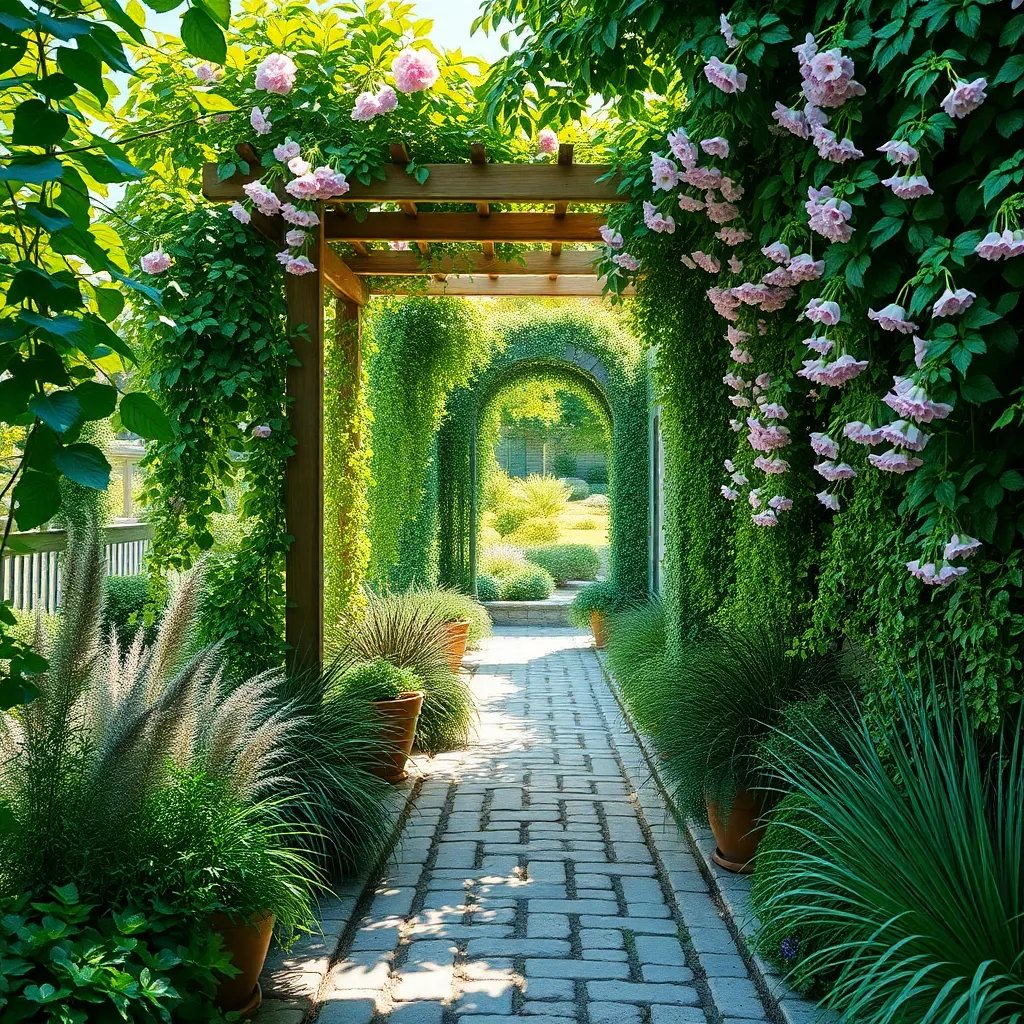
When selecting the right structure for your vertical garden pathway, consider the available space and the types of plants you wish to grow. A **trellis** is an excellent choice for climbing plants like beans, peas, or flowering vines, offering both support and an aesthetic appeal.
For those with limited ground space, **wall-mounted planters** can be a perfect solution. These structures allow you to grow a variety of plants, such as herbs and succulents, and can be easily watered using a drip irrigation system to ensure consistent moisture levels.
Consider using **pallets** as a budget-friendly and versatile option for vertical gardening. By securing landscape fabric to the back and filling the spaces with potting soil, you can create a lush, green wall that suits both urban and rural settings.
Advanced gardeners might explore **hydroponic systems** for a high-tech vertical garden pathway. This option allows for precise control over nutrients and water, ensuring optimal growth conditions for a variety of plant species, from leafy greens to strawberries.
Incorporating Climbing Plants
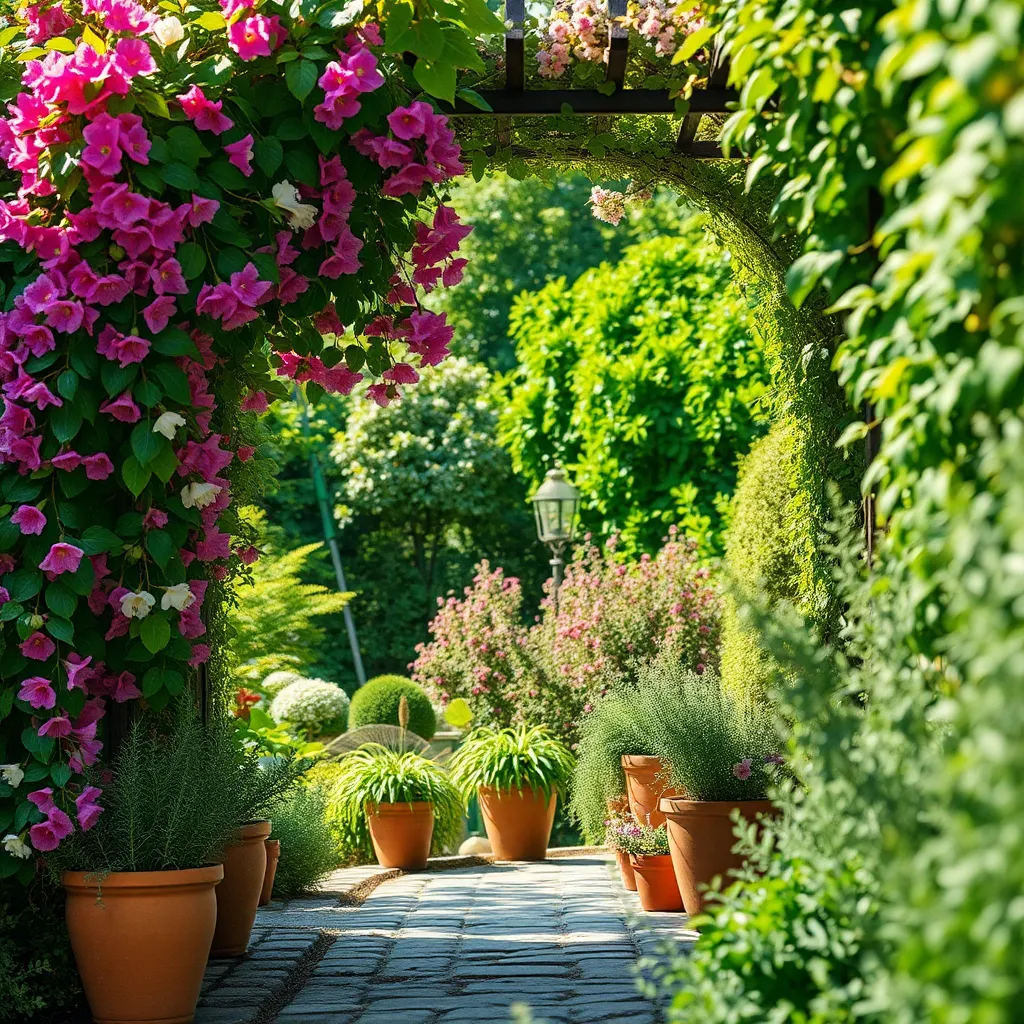
Climbing plants can transform your vertical garden pathways into lush, green corridors. To start, choose plants that thrive in your climate, such as clematis for temperate zones or bougainvillea for warmer regions, and ensure they receive the right amount of sunlight.
It’s essential to understand the specific needs of your chosen climbing plants, as this will influence their growth and health. For instance, climbing roses prefer well-drained soil and require regular watering, especially during dry spells, while ivy is more resilient and can thrive with less frequent watering.
Consider the support structure needed for your climbing plants, as this will guide their growth and create visual interest. Use trellises or arbors for climbing roses, which will need to be tied and trained, whereas less demanding plants like morning glories can easily twine around poles or fences without much intervention.
For gardeners looking to add a touch of creativity, mix different climbing species to achieve varying textures and colors. Combine fragrant jasmine with vibrant trumpet vines for a sensory delight, ensuring both have access to ample sunlight and are supported by sturdy structures.
Integrating Aromatic Herbs and Flowers
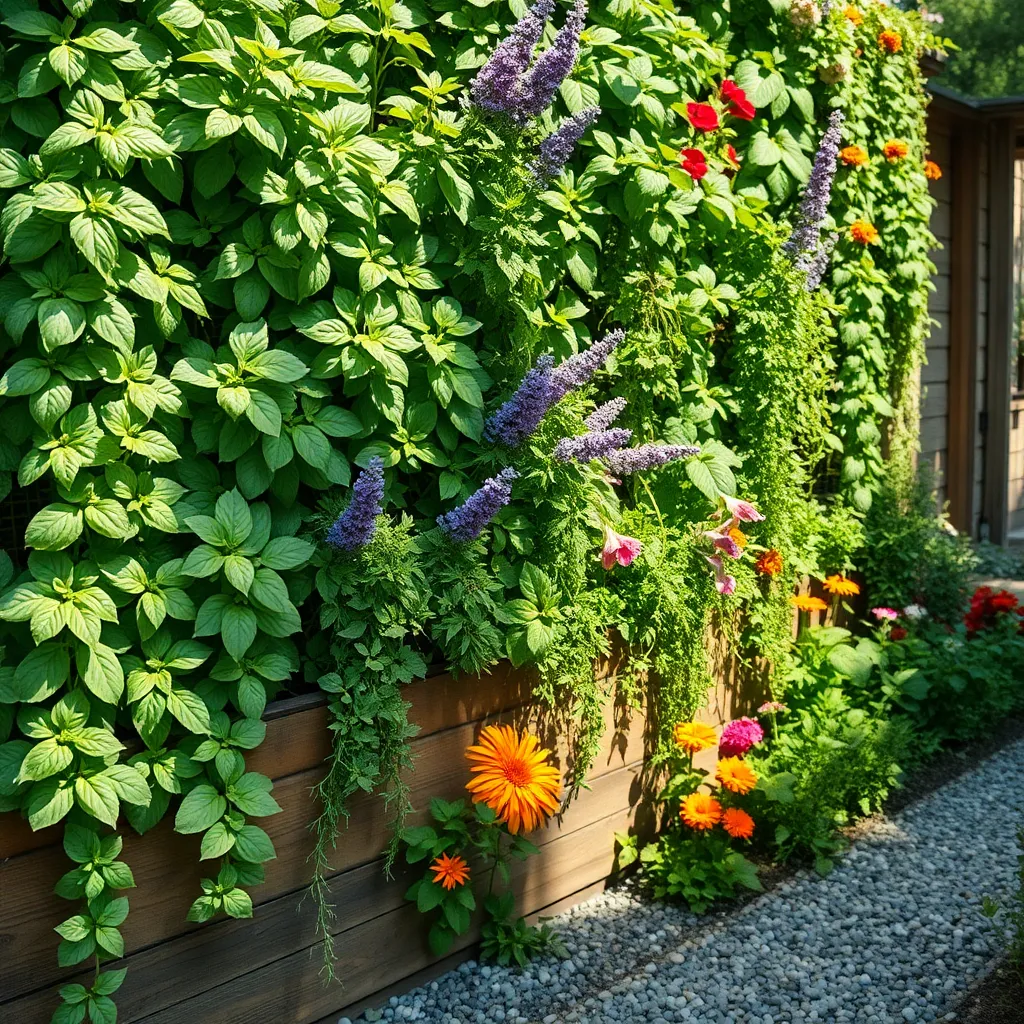
Vertical gardens provide an excellent opportunity to integrate aromatic herbs and flowers, enhancing both aesthetics and functionality. Lavender, rosemary, and thyme are ideal choices for vertical planting, as they are not only aromatic but also thrive in well-drained soils typical of vertical setups.
When planting these herbs, ensure they receive at least six hours of sunlight daily, which is crucial for robust growth. Regular pruning will not only prevent them from becoming leggy but also encourage a bushier, more productive plant.
Consider adding flowering plants like jasmine and honeysuckle for their delightful scents and visual appeal. These climbers are perfect for vertical gardens as they naturally grow upwards and can be trained on various supports.
Both beginners and experienced gardeners should focus on well-drained, rich soil to support the vigorous growth of these plants. Watering should be done sparingly, allowing the topsoil to dry out slightly between waterings to prevent root rot.
For advanced gardeners looking to maximize their vertical garden’s potential, incorporating a drip irrigation system can be highly beneficial. This system ensures consistent moisture levels without overwatering, crucial for aromatic herbs and flowers.
Utilizing Recycled Materials
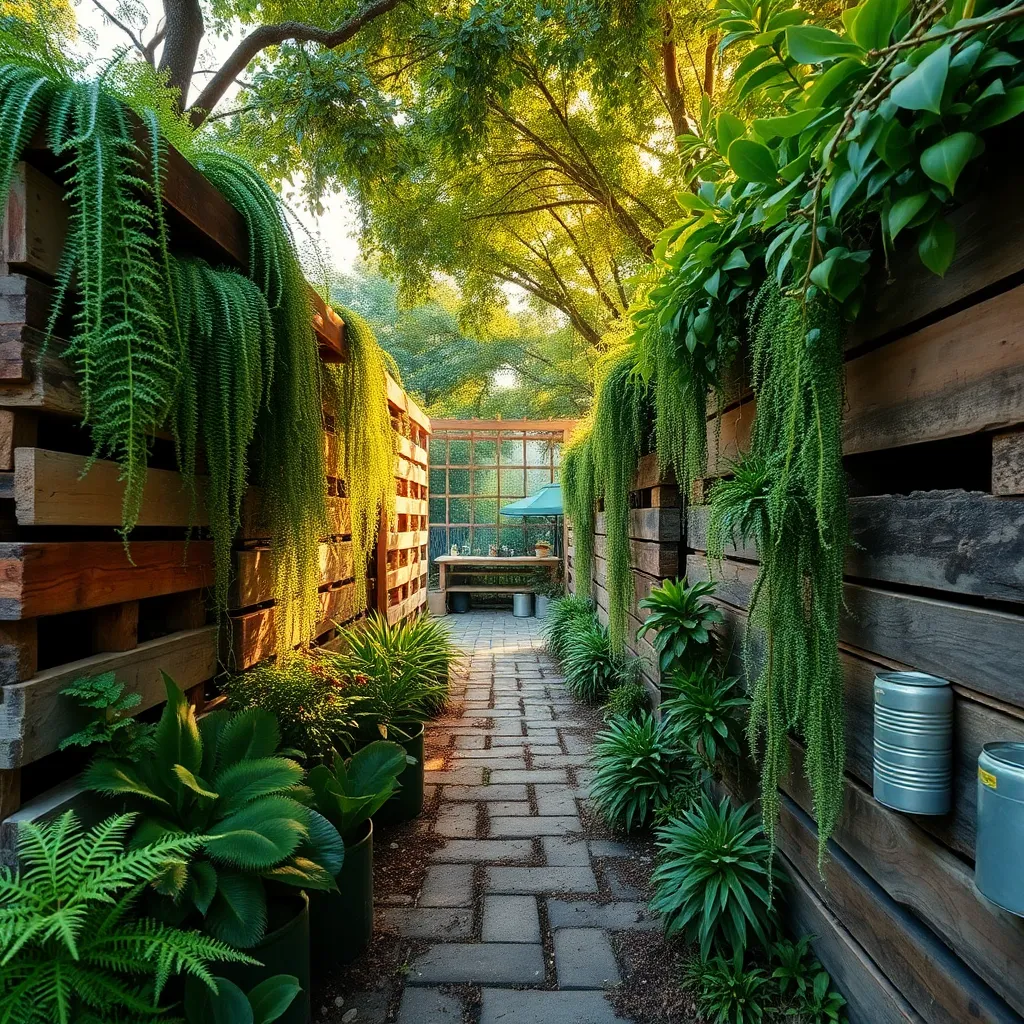
Recycling materials for your vertical garden pathway not only benefits the environment but also adds a unique touch to your design. Consider using old wooden pallets, which can be easily sourced and repurposed as a sturdy framework for your vertical garden.
To create a visually appealing and functional pathway, fill the gaps in the pallets with a mixture of potting soil and compost. This blend provides a rich growing medium for a variety of plants, ensuring they have the nutrients they need for healthy growth.
For a more advanced approach, incorporate recycled plastic bottles as planters within your vertical setup. Simply cut them in half, fill with soil, and secure them to the pallet structure, allowing you to plant smaller herbs or flowers that thrive in well-drained conditions.
Watering these setups requires some attention, especially in warmer climates where soil dries out quickly. A drip irrigation system can be installed to automatically provide consistent moisture, reducing maintenance and ensuring that your plants flourish.
Maximizing Small Spaces Effectively

When it comes to maximizing small spaces, vertical gardening is an excellent solution. By utilizing walls, fences, or specially designed vertical planters, you can create lush greenery even in the tightest areas.
Consider using tiered planters or hanging baskets to add layers and depth to your small garden. These structures allow you to grow a variety of plants, from cascading vines to compact herbs, without taking up precious ground space.
For beginners, starting with compact plants like herbs or lettuce is ideal, as they thrive in limited space and are relatively easy to care for. Ensure your plants receive adequate sunlight and water, adjusting the frequency based on the plant’s specific needs and the season.
Advanced gardeners might explore installing a drip irrigation system to maintain consistent moisture levels in their vertical gardens. This technique not only conserves water but also ensures that each plant receives the right amount of hydration.
Creating Multi-Layered Plant Displays
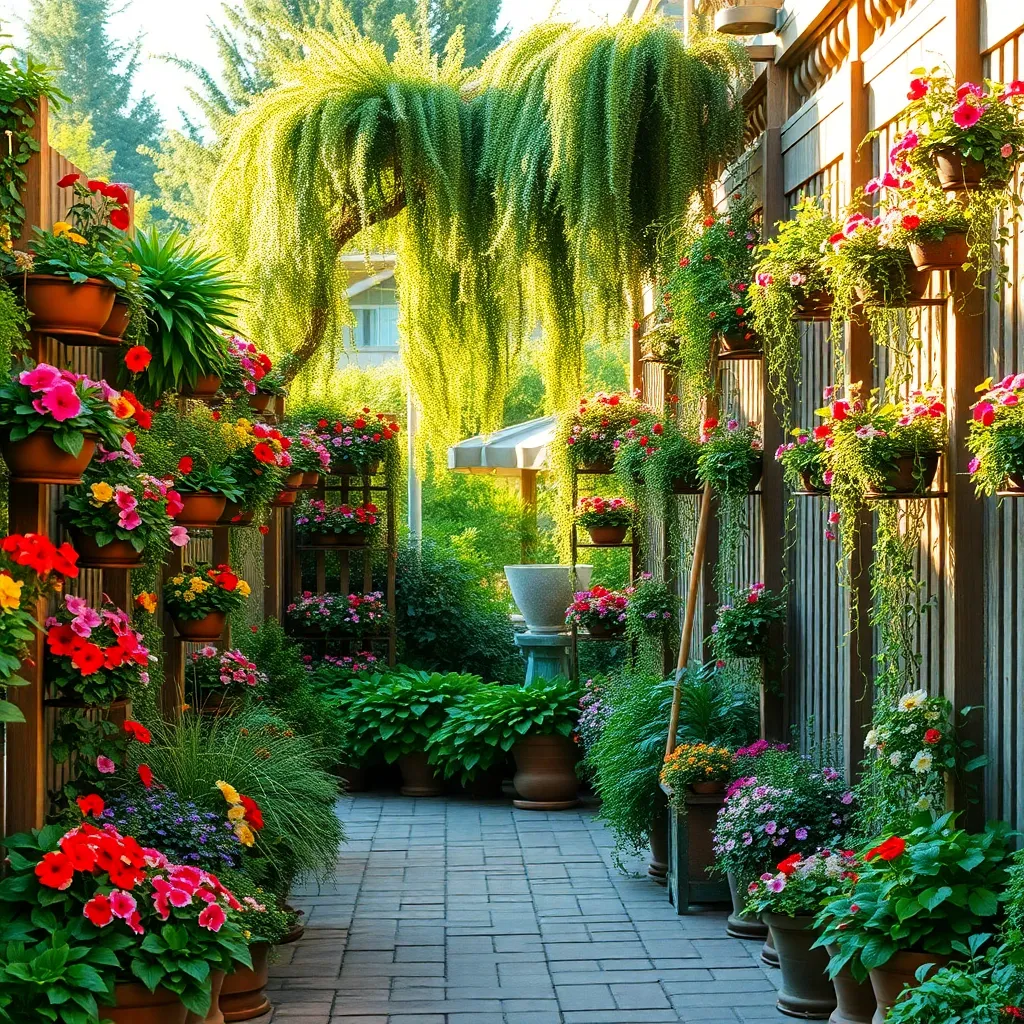
Creating multi-layered plant displays is an excellent way to add depth and interest to your vertical garden pathways. By using a variety of plant sizes and textures, you can transform a simple path into a lush, inviting journey.
Start by selecting a combination of tall and short plants to create layers. Tall plants, like ornamental grasses or climbing vines, can provide a backdrop, while shorter plants, such as ground covers or small perennials, fill in the foreground.
Consider the light and soil requirements of each plant to ensure harmonious growth. For instance, if your pathway receives full sun, choose drought-tolerant plants like sedums and echinaceas, which thrive in well-drained soil.
For those with shaded pathways, opt for shade-loving plants such as ferns and hostas. These plants prefer moist, rich soil and can add a lush, green dimension to your display.
To maintain the health and beauty of your plantings, regular maintenance is key. Watering should be adjusted based on your specific plant selections, with most needing deep watering once a week during dry periods.
Advanced gardeners might incorporate drip irrigation systems to ensure consistent moisture levels. Additionally, applying a layer of organic mulch around your plants can help retain moisture and suppress weeds, making care easier.
By carefully planning and maintaining your multi-layered plant displays, your vertical garden pathways will become a stunning focal point in any garden. Whether you’re a beginner or a seasoned gardener, these techniques offer a beautiful way to make the most of your garden space.
Enhancing Pathways with Lighting

Enhancing pathways with lighting not only adds beauty but also increases safety in your garden. Begin by selecting solar-powered lights, which are both energy-efficient and easy to install without wiring.
Place lights strategically along your pathway to ensure even illumination and highlight key features. Opt for fixtures that are weather-resistant to withstand the elements throughout the seasons.
Consider using LED lights, as they offer a long lifespan and are available in a variety of colors and intensities. For a touch of elegance, experiment with different heights and styles, such as lanterns or low-profile ground lights.
Advanced gardeners might integrate smart lighting systems that can be controlled via smartphone apps for dynamic effects. These systems can be programmed to adjust brightness and color according to the time of day, creating a truly personalized garden atmosphere.
Selecting Low-Maintenance Plants
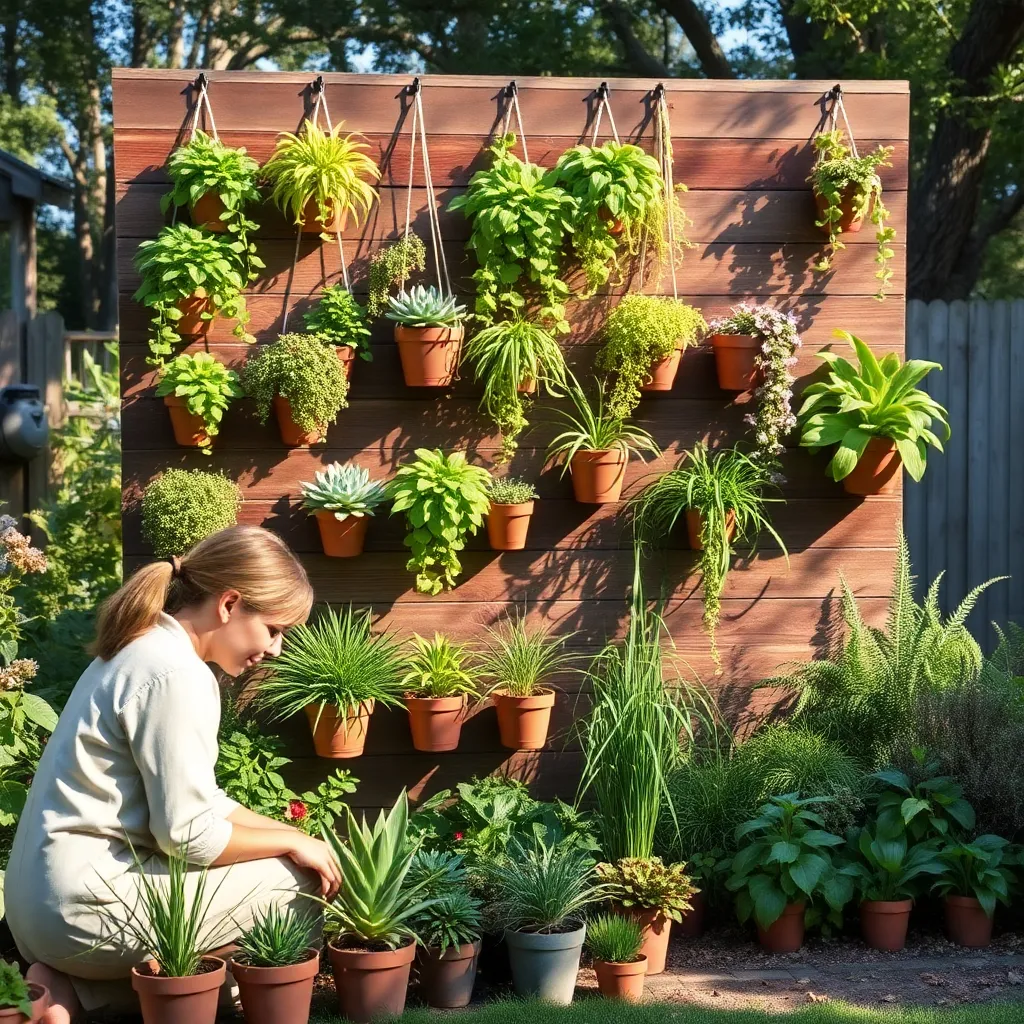
To create a stunning yet manageable vertical garden pathway, selecting low-maintenance plants is key. Opt for plants that thrive in various conditions and require minimal care, such as succulents or ferns, which are perfect for busy gardeners.
Succulents like sedums and echeverias are excellent choices due to their drought tolerance and vibrant appearance. They thrive in well-draining soil and need watering only once the soil is completely dry, making them ideal for vertical gardens.
Ferns, such as the boston fern or maidenhair fern, add lush greenery and texture to your pathway. These plants prefer indirect light and consistently moist, humus-rich soil, ensuring they stay healthy with regular misting and occasional watering.
For a splash of color, consider adding climbing plants like jasmine or honeysuckle. These plants not only beautify your garden with flowers but also require minimal pruning once established, thriving in a range of climates with moderate watering needs.
Seasonal Planting Strategies
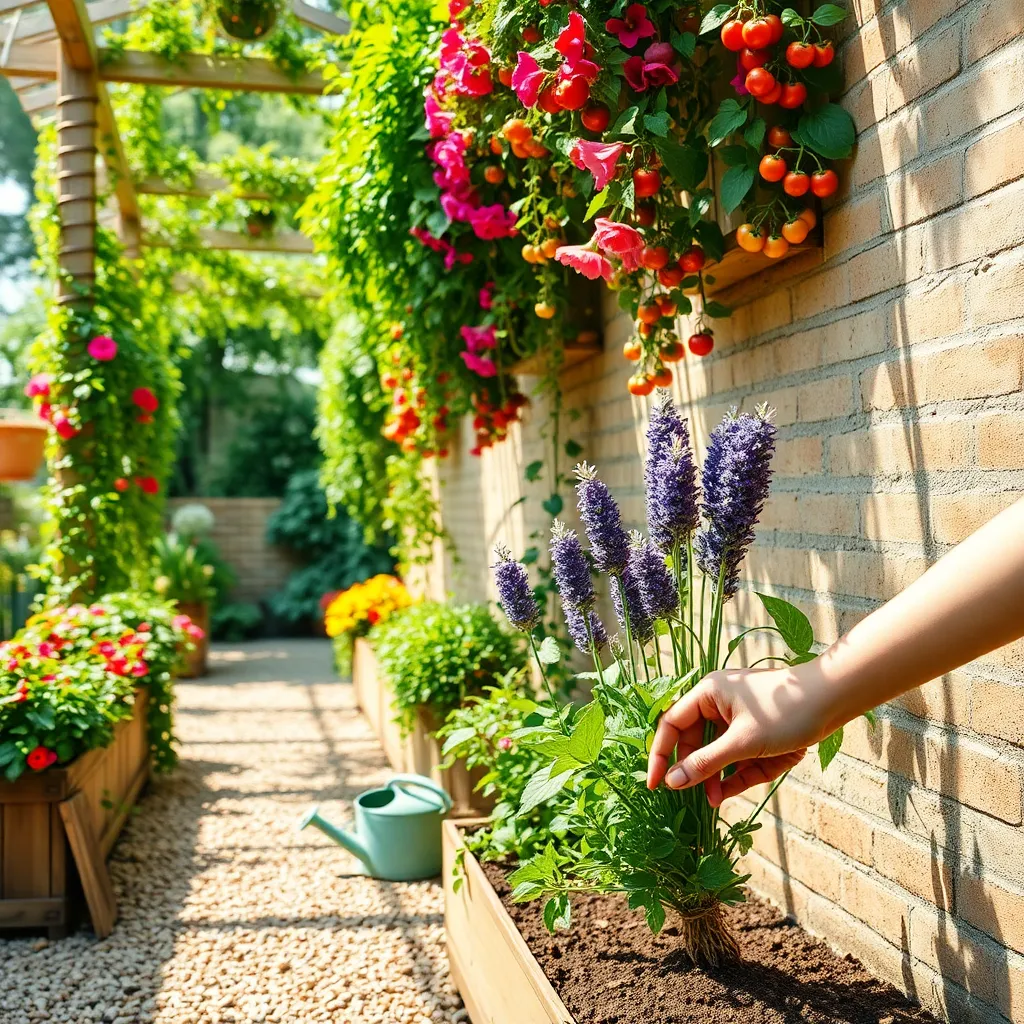
Seasonal planting is a strategy that maximizes the health and yield of your vertical garden by aligning plantings with their natural growing seasons. Understanding your local climate and the specific needs of each plant will allow you to stagger plantings for continuous growth and harvest throughout the year.
For beginners, it’s crucial to start with the basics: select plants that are well-suited to your climate and season. Use a planting calendar to help you decide when to sow seeds or plant transplants, ensuring each plant can thrive in its ideal conditions.
Consider the use of hardy perennials in your vertical garden, which can withstand seasonal changes and provide a lasting green backdrop. These plants often require less maintenance and can help stabilize your garden structure, making them a perfect choice for busy gardeners.
Advanced gardeners can experiment with succession planting, a technique that involves planting new crops in the same space once the old ones have been harvested. This not only maximizes your yield but also keeps your vertical garden looking lush and vibrant all year long.
To ensure success, pay attention to soil quality, which can vary with weather changes; use a high-quality, well-draining potting mix tailored for the plants you are growing. Regularly check moisture levels, especially in vertical setups where water can drain more quickly, and adjust your watering schedule as needed.
Finally, don’t forget the importance of seasonal maintenance, such as pruning and fertilizing, to keep your plants healthy and productive. By planning your planting strategy around the seasons, you can enjoy a thriving vertical garden that offers beauty and bounty year-round.
Maintaining Vertical Garden Pathways
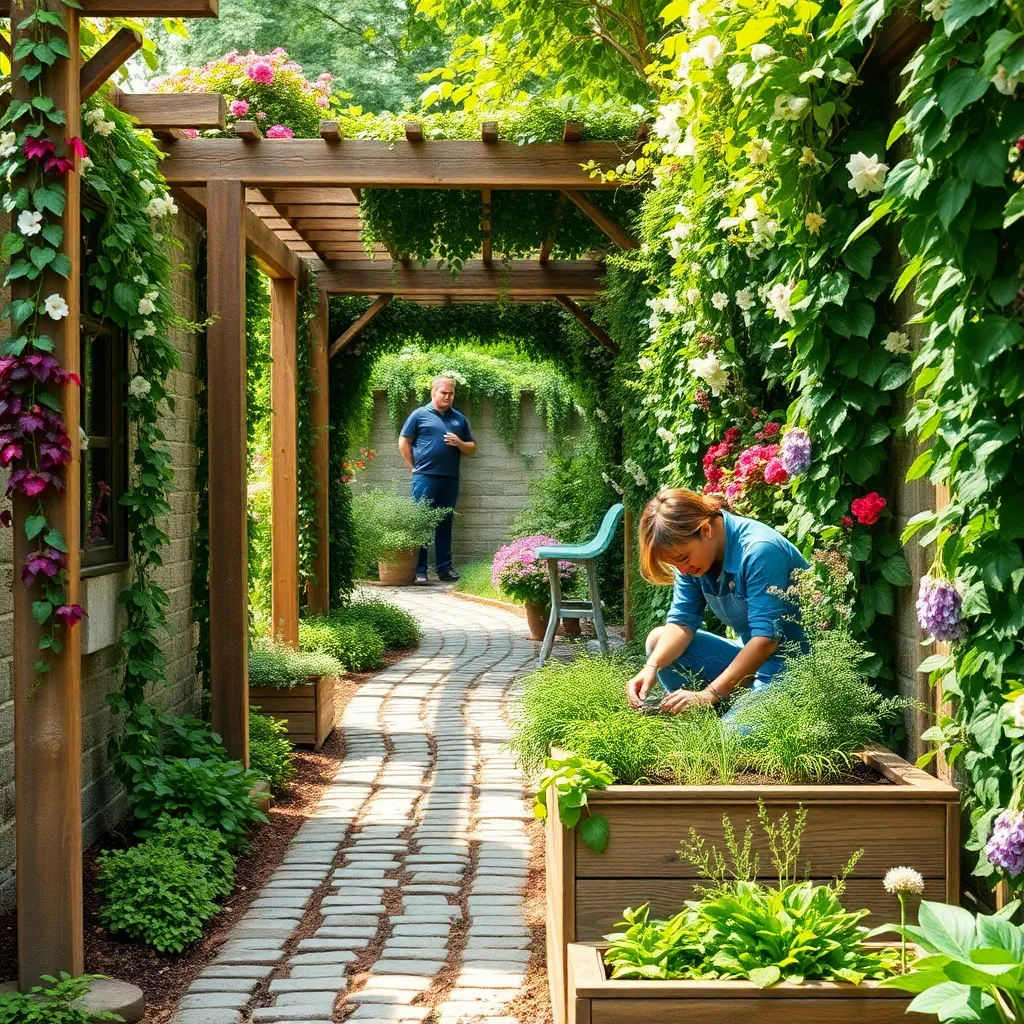
Maintaining vertical garden pathways involves regular attention to ensure thriving plants and a clear path. Start by assessing the pathways for any obstructions or overgrown plants that may impede movement, trimming back as needed to maintain accessibility.
Regularly inspect your vertical gardens for signs of pests or disease, as these can quickly spread and affect plant health. Consider using organic pest control methods such as neem oil or insecticidal soap to manage infestations without harming beneficial insects.
Watering your plants consistently is crucial, especially in vertical setups where soil can dry out faster. Implement a drip irrigation system to deliver water directly to the plant roots, ensuring even moisture distribution and reducing water wastage.
For those looking to optimize plant growth, adding a layer of mulch can help retain soil moisture and prevent weeds. Choose a lightweight mulch like straw or wood chips that won’t exert too much weight on the vertical structure, ensuring the plants have a supportive environment to thrive.
Inspiring Vertical Garden Pathway Ideas
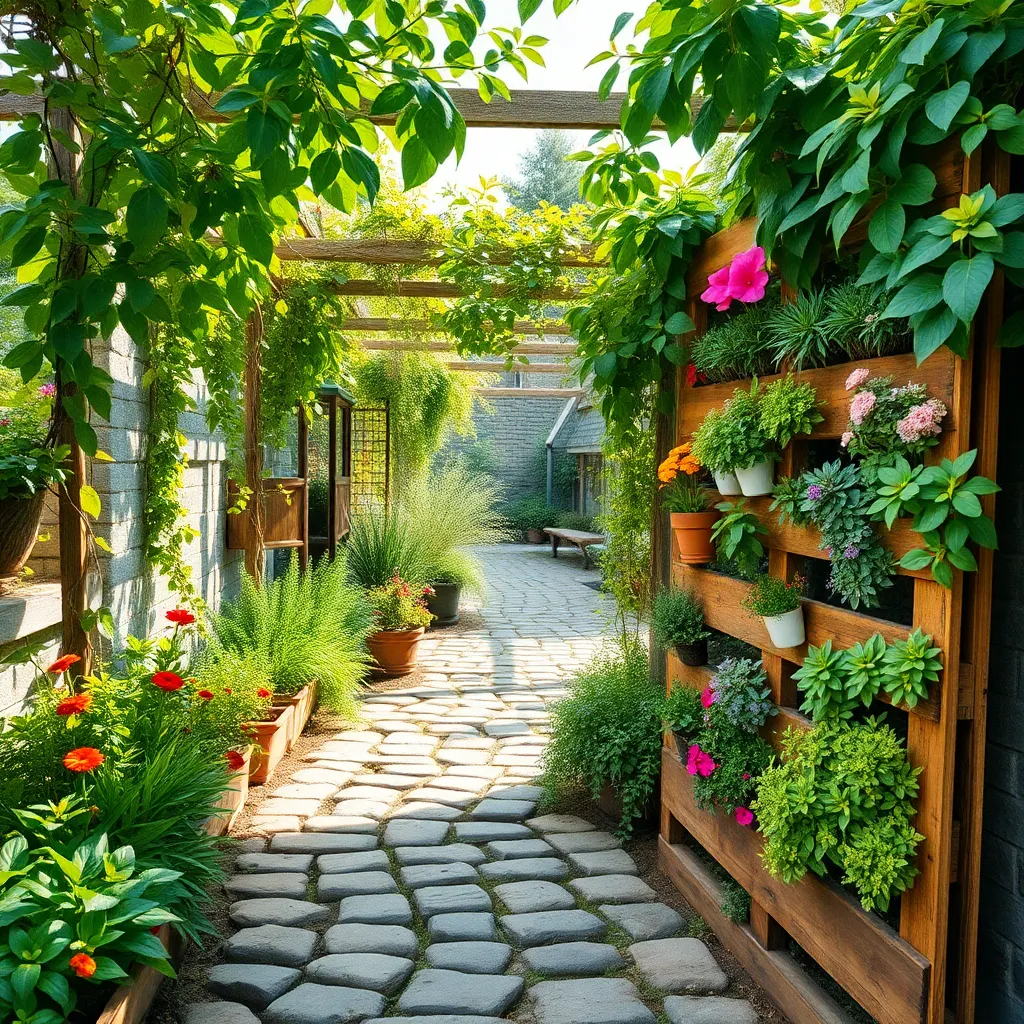
Vertical gardens along pathways can transform a simple walkway into a lush, green oasis. To create an inspiring vertical garden pathway, consider using a variety of plants that thrive in your climate and have similar watering needs.
Begin with choosing the right support structure, such as a trellis or a series of planters mounted on a wall. Ensure the structure is sturdy enough to support the weight of the plants and soil, especially in windy conditions.
For beginners, consider starting with easy-to-care-for plants like ferns, ivy, or pothos. These plants are known for their ability to adapt to various lighting conditions and require minimal maintenance.
Incorporate blooming vines such as clematis or jasmine for a splash of color and fragrance along your pathway. These plants will need well-draining soil and regular watering, especially during their growing season.
Advanced gardeners might experiment with vertical vegetable gardens featuring compact varieties of tomatoes, peppers, or herbs. These plants require full sunlight and consistent watering to thrive, so ensure your pathway receives adequate light.
Regular maintenance, such as pruning and fertilizing, is crucial to keep your vertical garden lush and vibrant. Use organic fertilizers to promote healthy growth and consider a drip irrigation system to maintain consistent moisture levels.
Conclusion: Growing Success with These Plants
As we’ve journeyed through the 13 Vertical Garden Pathway Designs, we’ve explored key relationship concepts such as nurturing growth, embracing diversity, building strong foundations, and fostering open communication. Each concept parallels the careful planning and creativity involved in designing a garden pathway, reminding us that relationships thrive with attention and effort. By incorporating flexibility, patience, and shared goals, we can cultivate vibrant and resilient partnerships.
Now, take a moment to reflect on your own relationship pathway. Choose one design element that resonates most with you and discuss it with your partner today. Whether it’s creating shared experiences or allowing space for individuality, this small step can lead to meaningful growth and understanding.
Remember, relationships are dynamic and ever-evolving. Bookmark this article as a handy resource to revisit these concepts and inspire ongoing development in your relationship. By saving it, you’ll have a go-to guide for nurturing your relationship garden.
As you move forward, envision your relationship flourishing with each intentional step you take together. With commitment and creativity, you can transform your relationship into a thriving, beautiful space that enriches both your lives.

